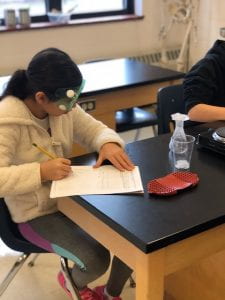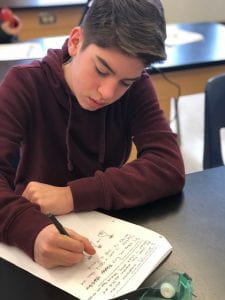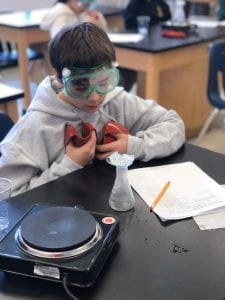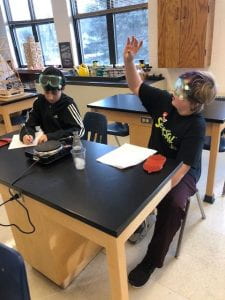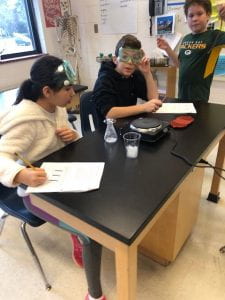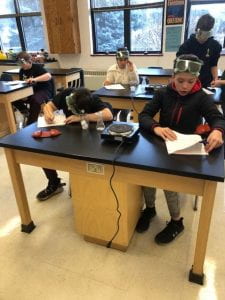As we continue our investigation to determine how the Dorito shipping container ended up on the shore of the beach, we decided that it would be important to focus on waves this week.
The 5th grade scientists had lots of great ideas about waves. Through our questioning, wonders, and thoughts we decided that it would be best to create waves to understand how they move and work.
Our ‘I Can’ statement this week was as follows:
” I can plan and conduct an investigation collaboratively to measure patterns in the waves produced when the spacing, timing, and depth of the paddle pushes in a bin of water is varied.”
Before conducting the lab, each group of students had to figure out a plan on how they would need to move the paddle to be able to create taller waves, shorter waves, close together waves, and farther apart waves.
Here is one groups work:
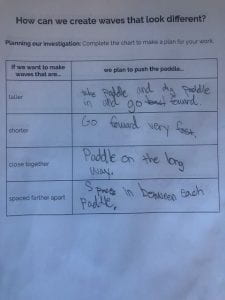
Along with this, to make things go smoothly, each group assigned each member a role for each trial so everyone had a part in the lab. Students switched between videoing the waves in slow motion, being the paddle pusher, measuring how high the paddle was being moved in the water, and if it was a group of a 4 – someone to clean up any access water.
As students completed each trial with the goal of creating a certain type of wave, they recorded what their waves looked like after watching the slow motion video so they could model an accurate representation of what the waves actually looked like.
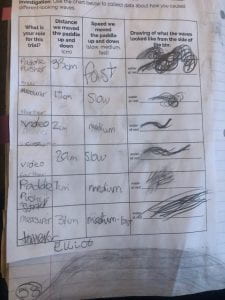
Although we have not had time to reflect and share out our data, noticings, and wonderings YET (we will on Monday!), I was so impressed with the scientists hard work and eagerness to take part in this lab. It was a great way to end the week in science and I am so looking forward to sharing out and making new discoveries next week!


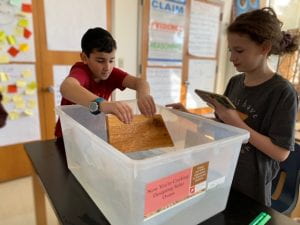
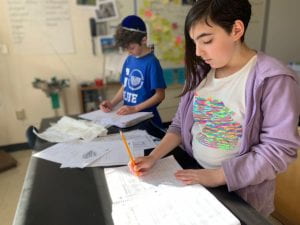

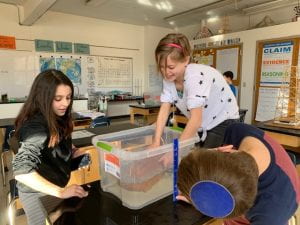
Have a great weekend,
Gev. McAdams
Normally, I wait to blog until Thursday and Friday… however, today, I just couldn’t wait!
Over the past week, the 5th graders have been working hard learning and practicing how to multiply decimals. I have been SO impressed with their hard work and effort.
To start off class today, we did a quick brain check to see if we remembered what we learned last week. As I walked around as each child was working, I was blown away! Every, single 5th grader showed that they understood how to multiply decimals and were able to explain how it works by connecting it to our understanding of fractions.
Since we have a short quiz tomorrow, today we worked on reviewing through a fun “escape room” math activity. The kids were put into teams where they had different tasks to complete and codes to figure out all by solving different decimal multiplication problems.
Every team was focused, excited, and helping each other throughout this entire activity. Not a single 5th grader gave up, and most importantly, each group was working so unbelievably wonderful as a team!
Every 5th grader should be SO proud of themselves – I sure am 🙂
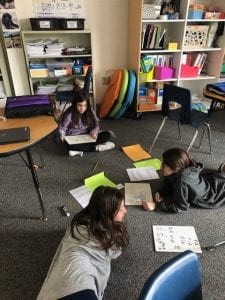



Happy Monday,
Gev. McAdams
Today, in 6th grade science, we focused on the behavior of air (a gas) in a syringe. The scientists were given time to play and tinker with their syringes while thinking about what was happening to the air inside the syringe.
The scientists were given three tasks to first experiment with and then model:
- What happens when the syringe is filled with air?
- What happens when the air is compressed (pushed in) with no way to escape?
- What happens to the air as you expand the plunger of the syringe (or pull it back) while also blocking the airway?


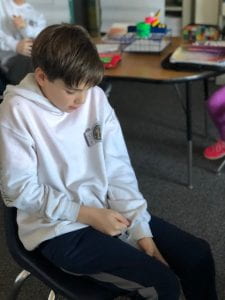





The scientists had great thoughts. They mentioned things like…
“When the air is compressed in the syringe, there is less room for the air to move around.”
“When the air is expanded in the syringe, there is more room for the air to move around.”
Since there is more room in the syringe for the air to move around, doesn’t that mean there is open space because there is not enough air to fill the entire inside of the syringe?”
I am so excited to continue this investigation and figure more important scientific ideas with the 6th grade scientists.
Have a great weekend,
Gev. McAdams
This week, 5th grade scientists spent time modeling their initial thoughts on how that huge, heavy shipping container filled with Doritos ended up on the beach.
I was so impressed with the 5th grade scientists models. Check them out below!
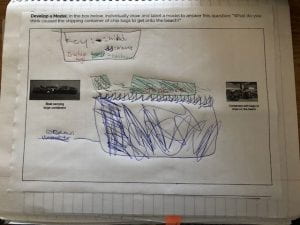

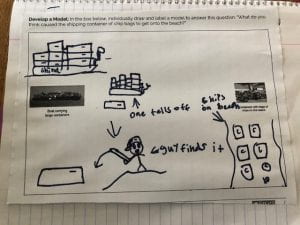

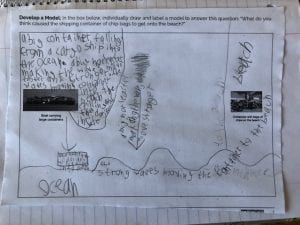
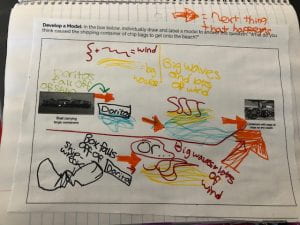
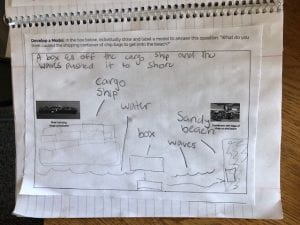
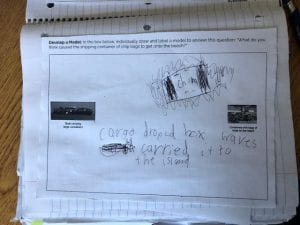
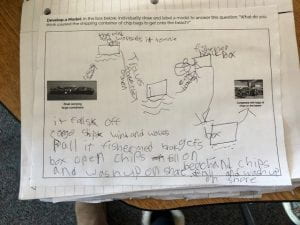
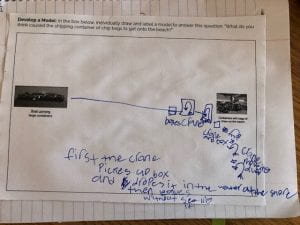
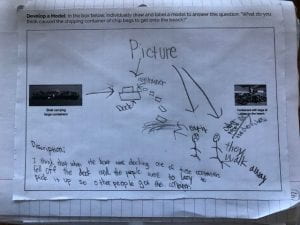
Today, we spent the day coming up with ways to investigate this phenomena.
Ask your 5th grade scientist(s) at home what they have figured out so far and what our next steps are going to be!
Have a great weekend,
Gev. McAdams
This week we started our new unit in science focused on wave and ocean structures. Our phenomena this time was a series of images of thousands of bags of chips that were scattered all over a beach. The images started close up, however as the series went on we began to see where all of those bags of chips came from. Throughout this process, the 5th grade scientists were asked to record and share their noticings and wonderings.
Already, I was so impressed with what they had to say. I heard things like,
” It looks like they came from that container – but how did it get to shore?”
“Isn’t that container way to heavy to get to the shore?”
” Maybe it fell off when the cargo ship was docked and that’s how it got to the shore.”
“I think the waves might have pushed the container to shore.”
What do you think? What noticings and wonderings do you have? Take a look at the series of images below. We would love to hear your thoughts and questions!
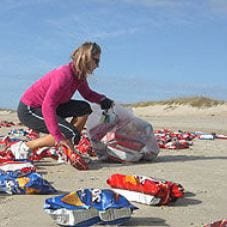

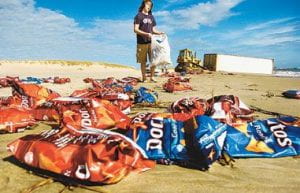

Have a great weekend,
Gev. McAdams
To begin thinking about matter this week, the 6th grade scientists conducted an experiment where they observed the phase changes of menthol. The scientists shared so many great observations with each other. Our biggest observation was the crazy little “crystal pieces” (as we are calling them right now) that appeared all over our beaker and watch plate after the substance had melted and cooled…
The 6th grade scientists left class thinking about and my hypotheses on what those “crystal pieces” were and how they got there. I am so excited to hear their thoughts and continue our investigation next week!
Stay tuned,
Gev. McAdams

